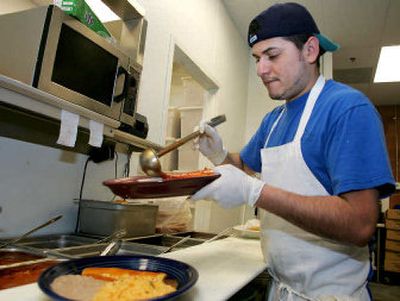Authentic flavors

COLUMBUS, Ohio — The tamales at Jose Avalos’ Mexican restaurants are wrapped and steamed in corn husks, a traditional way to give them flavor.
The chiles rellenos — roasted peppers stuffed with pork or fresh Mexican cheese — are no longer made with generic green bell peppers but with authentic poblano ones.
It’s part of a push to introduce Americans to more authentic Mexican cooking.
With the country’s Hispanic population swelling to more than 41 million — a majority with Mexican origins — U.S. restaurants are slowly moving beyond the casual fare of tacos, burritos and combo plates that are little more than sanitized versions of the real deal.
Avalos, 34, left Mexico with his parents in 1978 and now owns 12 restaurants, including Las Margaritas in suburban Columbus. Most of his customers aren’t immigrants or Hispanic.
“Americans are more open to trying new things than they were 10 or 15 years ago,” he said. “We’re trying to be authentic with our food, but there’s still an educational process that needs to take place before people really adopt it.”
Mexican restaurant chains reported $9.7 billion in sales in 2004, the latest data available from Chicago-based Technomic Inc., an industry research firm. That’s up from $7.4 billion in 2000.
Mexican food — along with Italian and Chinese — has become so popular that it’s joined the mainstream and is hardly viewed as being ethnic anymore, said Steve Anderson, president and CEO of the National Restaurant Association.
But what most Americans consider “Mexican” food is essentially Tex-Mex, a style developed more than 50 years ago with the fusion of recipes brought by Mexican immigrants to Texas and other border states in the American Southwest, observers say.
Hard taco shells filled with ground beef, cheese, lettuce and sour cream are as familiar as hot dogs in the U.S., but they’re not Mexican. Neither are nachos.
Another misconception is that Mexican food is spicy hot. That’s not the way Mexicans enjoy their food, said Rick Bayless, a Chicago chef and restaurant owner and host of the PBS series, “Mexico: One Plate at a Time.”
Real Mexican food is never covered with melted cheese, and most authentic dishes are never served with rice and beans, he said.
“You’re starting to see Mexican cooking in this country evolve, but we’re probably a generation away,” said Bayless, noting that it took decades for Italian restaurants in the U.S. to move away from generic spaghetti-and-meatball dishes that were mass marketed.
Some restaurants, though, are sticking with time-tested formulas. Taco Bell, the fast-food chain that helped popularize the hard-shell taco in the U.S., has no plans to abandon what it calls its “Mexican-inspired” menu, spokesman Rob Poetsch said.